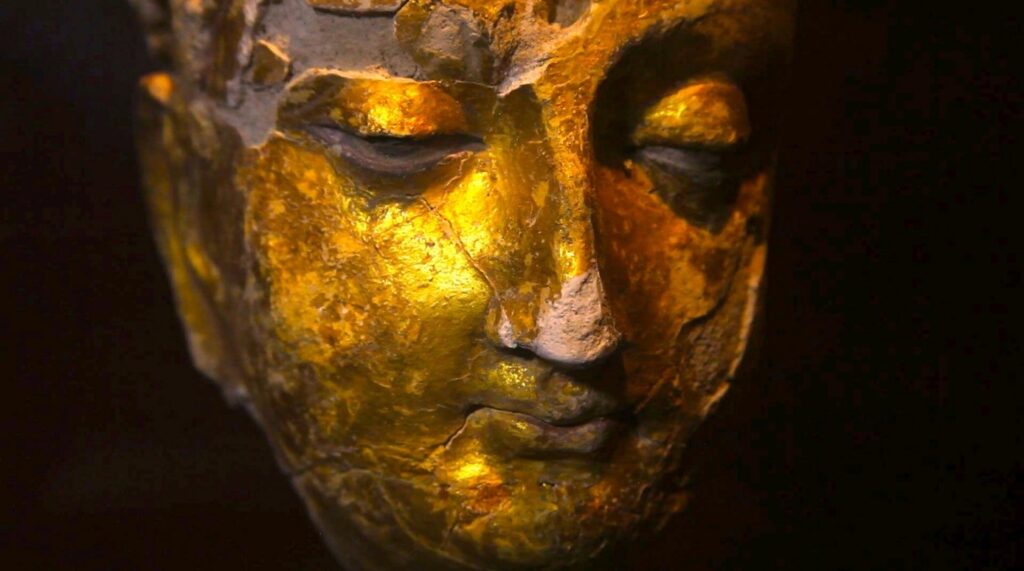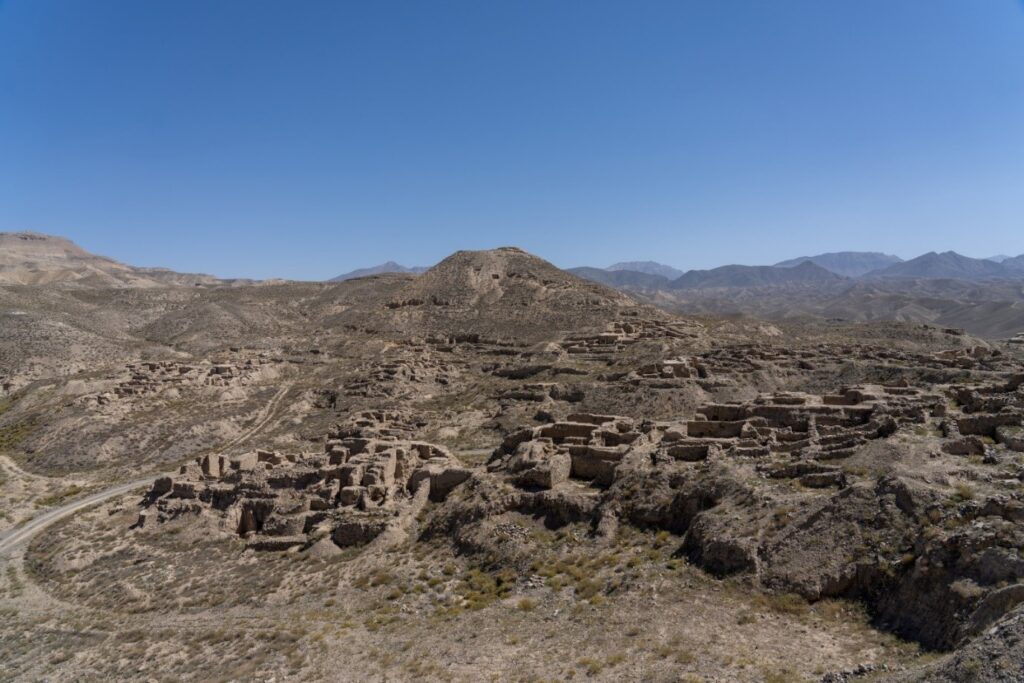
Recently, a ministerial delegation led by Hajji Mullah Abdul Ghani Baradar Akhund, the Afghan Deputy Prime Minister for Economic Affairs visited Mes Aynak mines, situated some 40 kilometres southwest of capital Kabul. These mines hold the largest reserve of copper in Afghanistan. In Afghanistan’s biggest ever foreign investment project, the China Metallurgical Corp, MCC had signed a massive $3 billion agreement to mine copper at Mes Aynak in 2007. But as they failed to resolve the financial terms, this project has run into a 15-year delay. Now that international aids are frozen since the Taliban’s return to power, these mines could provide significant economic boost to the cash-strapped regime. Not just copper but Afghanistan has rich deposits of iron, bauxite, and lithium also. The Deputy Prime Minister also met the officials of the MCC and requested China to begin the actual work as soon as possible.

Mes Aynak mines hold a lucrative six million tonnes of copper, but the Chinese company has so far been evasive about environmental impact of this massive mining project. The other important concern persistently voiced by the international community is regarding the unique heritage of Mes Aynak. This also happens to be the largest archaeological site in Afghanistan. Globally also this is a remarkable site with evidence of copper smelting for at least 2,000 years. So far, researchers have unearthed a sprawling Buddhist complex of over 100 acres with multiple monasteries and stupas, more than 400 Buddhist statues and a market area. Archaeologists have also found the remains of a Zoroastrian fire temple, two forts, a mint, miners’ colony, and ancient copper smelters. Below the Buddhist level, there are also remains of an older bronze age civilization dating back to the third century BCE or even earlier.

Several centuries back, this was at the heart of the Silk Road and even then the availability of copper was of vital importance. As archaeologists came out with the results of their hard labour, apart from several Kanishka-era coins and other artefacts, what caught worldwide attention were the beautiful images of almost gold coloured Buddha, a few with sublime expressions of compassion. Since then, people from all over the world have been expressing their concern about saving the unique heritage of Mes Aynak. A documentary called Saving Mes Aynak was directed by Brent E Huffman and was premiered in 2014 ().
http://www.savingmesaynak.com/

The importance of Mes Aynak is directly related to the extraordinary evolution of Buddhism in the northwest corner of the Indian subcontinent and especially that of the Gandhara school of art. At least seven centuries after the Mahaparinirvana, first Buddha images were made in Gandhara. Perhaps it was the need to present the imagery to an audience of new converts or to reinforce the greatness of their faith in front of a constant stream of foreigners. The Gandhara School of Art, with Indian imagination and storytelling and Greco-Roman imagery and technique, produced arguably one of the most fascinating artistic lineages of all times. The Gandhara Buddha with its Greek himation/Roman toga-like dress, beautiful drapery over a robust body, curly Mediterranean hair, and a top knot was modelled after Apollo and Zeus.

Till date, the first specimen of this new art is the Bimaran Gold Casket, which could be dated to mid-first century BCE but the halcyon days of the Gandhara School came around the Kushan Empire, two centuries after the domination of the area by the Indo-Greeks. The style, the craftsmanship was available there for quite long, but it was the rich patronage of the Kushan period, which led to the creation of this extraordinary artistic tradition. The Gandhara School was active from the second to the fifth century CE, with some continuation till at least the seventh century. The spread of Islam in Afghanistan led to severe damages to such heritages that continued till the recent times as evidenced in the destruction of colossal Bamiyan Buddhas by the Taliban in 2001.

Buddhism acquired a cosmopolitan character in this region, and it was from here that it took off through the Silk Route, carrying along the unique imageries developed in the Gandhara area, including Mes Aynak. The popularity and widespread acceptance of the Buddha and Bodhisattva images created in the second-century CE Gandhara could be gauged from the fact that it spread around the subcontinent in no time. Near contemporary Buddha images from Mathura show the same drapery and hairstyle, finely delineated body structure, halo, and same poses of Buddha albeit with more Indianised face and often with lighter clothing. More than 1,000 kilometres away at Amaravati and Nagarjunikonda in Andhra or at Kanganahalli in Karnataka, this iconography was adopted by third century CE. In Western India, first such Buddha images were created at Kanheri probably using wood and other perishable material, graduating to massive stone images by fifth century at Ajanta. The style spread to rest of Asia along the Silk Road and to South East Asia and Sri Lanka probably through the sea route, geographically culminating in the giant Kamakura Buddha of Japan in the twelfth century.

Buddha provided a unique framework for an urban, craft-oriented socio-economic structure. Merchants and crafts people needed to adhere to simple precepts in their daily life and earn karmic merits through donation to Sangha for a favourable re-birth. This mutual dependence – of monasteries/monks on donation from lay people and merchants extending patronage – led to building of large stupa-monastery complexes close to major cities or along the main trading routes–Mrigadava (Sarnath) outside Kashi, Dharmarajika outside Takshashila, Sanchi outside Vidisha, Amravati outside Dharanikota (Satavahana capital), and Nagarjunikonda outside Vijayapuri (Ikshvaku capital).

From third century CE, small and large images of Buddha came to adorn such places of worship and the same model was taken abroad as Buddhism travelled along the Silk Road. Monastery-stupa complexes at Peshawar (Takt-i-Bahi), all over Afghanistan, in Bactria, at Khotan, and Kashgar all attest to the continuation of the same tradition. In Mes Aynak we see a microcosm of that universe where patronage of rich traders and crafts people engaged in copper mining, smelting and production helped to build an extraordinary artistic legacy.




A responsibly carried out extraction of copper from Mes Aynak may help Afghanistan in many ways but it should not be done by destroying this unique heritage of humankind. Even the Deputy Prime Minister has given direction to shift the precious artefacts to a safe location before starting the work. For several years French archaeologists have been working there and the US Embassy in Kabul had also funded significant work there. Recently the Aga Khan Cultural Services- Afghanistan, AKCSA has stepped into protect and preserve the site. The AKCSA will carry out a series of focused activities beginning with the emergency protection of the site ahead of winter 2022, and on-site consolidation and conservation of artifacts and historic structures. A pilot project will also be carried out to plan and design the possible relocation of artifacts and architectural elements from Mes Aynak to alternative locations within Afghanistan.
Anindya Sengupta is a student of history and co-author of Laxminama: Monks, Merchants, Money and Mantra. He blogs at https://thetimeriver.blogspot.com/